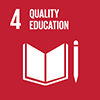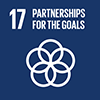Description/achievement of initiative
The Survive and Thrive Alliance is a public-private partnership established to achieve significant reduction in maternal and neonatal morbidity and mortality in low-resource settings through strengthening the performance of providers, as well as improving the quality of facility-based maternal, newborn and child health (MNCH) services to prevent maternal and child deaths. The US Government has joined with country nationals to implement, facilitate and integrate evidence-based interventions by mobilizing multi-sectorial technical experts from pediatric, obstetric and midwifery professional associations, private sector, and civil society to improve the quality of facility-based MNCH services in over 80 countries.
Implementation methodologies
The Alliance will replicate the five best practices that it had learned from the first phase.o Public Private PartnershipsIn partnering between the public and private sectors, the Alliance model emphasizes synergies of interest and builds on the complementary strengths of each partner while putting systems in place to mitigate conflicts of interest. Recognizing the potential power of public-private partnership among diverse organizations with complementary skills and assets and spurred by funding constraints, the Alliance supports common goals and jointly defined solutions to social or economic development problems; inclusion of non-traditional resource partners (companies, foundations, universities, professional associations, etc.); shared resources; and sustainable MNCH approaches.o Government as StewardThe Alliance strongly encourages all partner organizations to respect the principle of country-led and country-owned initiatives, seeks the guidance and coordination of ministries of health (MoHs), and involves host-country stakeholders in all Alliance activities. The Alliance implements all its activities within the national maternal and newborn health plan that is developed and owned by the participating national government and plays a supportive role to countries.o Engaged Professional AssociationsStrengthening national professional associations to 1) gain the organizational expertise required to become strong advocates for their professions and families they serve; and 2) develop MNCH champions in target countries through educational programming and ongoing mentorship.o Demystification, Simplification, Simulation, Innovation A hallmark of Survive and Thrive educational programs is the use of low-cost, evidence-based, purpose-driven innovations that are integrated with educational materials and quality improvement measures. The Alliance continuously looks for ways to improve, simplify and innovate the educational and life-saving technologies that are made available through the partnership. For example, through the use of a low-cost simulator designed to teach basic neonatal resuscitation skills, the alliance supports resuscitation simulation in training settings as well as in low-dose, high-frequency practice drills.o Clinical and Quality Improvement. Implementing countries recognize the importance of introducing quality improvement approaches such as refresher training, low dose high frequency simulation, mentoring, supportive supervision and certification to sustain and enhance trained professional skills at regular intervals.
Arrangements for Capacity-Building and Technology Transfer
The first step often is engaging in a dialogue with the MoH, advocating for MNCH improvement and for reduction in newborn and maternal mortality. Working through its network of partners and hand-in-hand with governments, the Alliance identifies the key opinion leaders and policy makers in each country and develops a tailored approach to encourage exposure to S & T interventions among key stakeholders. Many of these local champions, often from the MoH and professional societies, are sponsored by development partners to attend regional or international training of trainers. This is often preceded by a stakeholder meeting at the national level to engage all stakeholders to begin the dialogue of whether and how to test, adapt and move forward with a tailored program model and approach to addressing the country’s MNCH goals. Inherent to the success of this process is the need for strengthened professional societies with established goals to improve maternal, newborn, and child health outcomes.Once governments and stakeholders in countries make a decision to introduce S & T interventions in their MNCH programs, Alliance partners provide support to the country partners in multiple ways including: reviewing and updating the national newborn and/or maternal care plans; adapting and integrating S &T interventions into existing MNCH national training materials; training master trainers and health providers in-country; conducting periodic supportive supervision in health facilities; facilitating the procurement of resuscitation equipment for health facilities; supporting evaluation approaches, facilitating interdisciplinary clinical initiatives and professional association organizational development, and exploring funding opportunities for the rollout and scale-up of the program in country.
Coordination mechanisms/governance structure
To coordinate the activities, the Alliance has a designated Secretariat to coordinate members, a Steering Committee comprised of the founding member organizations, and monthly calls with all partners. Partners demonstrate that global public-private partnership is an effective strategy for rapid rollout of health interventions and professional association strengthening. The Alliance leverages and relies on each partner’s assets, cash and in-kind contributions, shared knowledge, influence, networks, and program platforms. Each partner facilitates coordination and harmonization of training methods and program approaches and contributes to reducing the cost of products such as medical devices and training materials. The Alliance influences global policy on interventions, shapes the global market for products, catalyses professional association capacity-building, stimulates the development of innovations and educational materials, and is a powerful force for advocacy through the widespread reach of its partners’ influence and networks.
Partner(s)
Government: US Agency for International Development (USAID), Norwegian Agency for Development Cooperation (NORAD); Private Sector: Laerdal Global Health, Johnson & Johnson, University Research Corporation, Bill & Melinda Gates Foundation; NGO: Save the Children, Jhpiego, Global Health Media Project, Project CURE; FBO: Catholic Medical Mission Board, Latter-day Saint Charities, Professional Association: American Academy of Pediatrics (AAP), American College of Nurse Midwives (ACNM), American College of Obstetricians & Gynaecologists (ACOG), Sigma Theta Tau (STTI), International Pediatric Association (IPA), American Heart Association (AHA); Academic Institution: Earth Institute/Millennium Village-Columbia University





 2010-2015
2010-2015
 2012-2016
2012-2016
 2012-2016
2012-2016
 2017
2017
 Time-frame: 06/2012 - 12/2017
Time-frame: 06/2012 - 12/2017